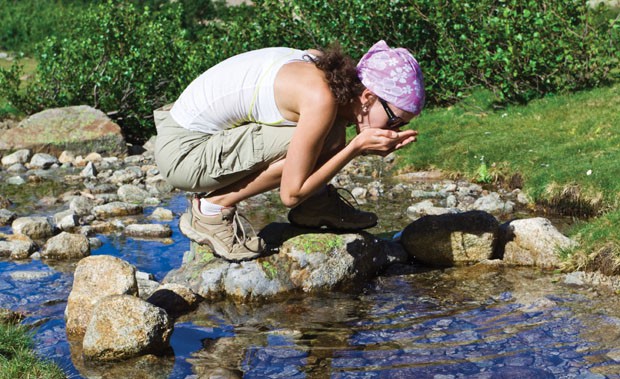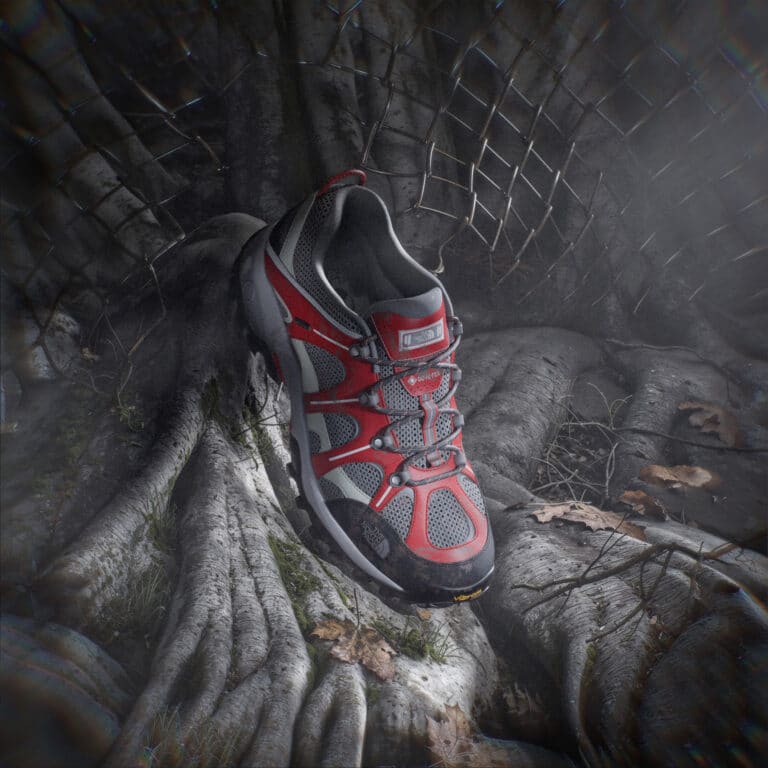Three Survival Myths
Myth: Moss only grows on the north side of trees.
Fact: In the distant north, where the sun has a more southern position in the sky, this can be true. But in a temperate forest that sees a lot of rain, like in the Southern Appalachians, you’ll see moss on every side of everything.
Myth: If you’re high enough in elevation, it’s okay to drink straight from a stream.
Fact: The stream may look pristine, but you don’t know if birds have pooped in it, or if a deer carcass is lying in the water upstream. If you’re at the source of a spring, and you’ve got a really long straw that you use to access the water before it reaches the surface, then maybe it’s okay to drink. But even that pretty pool right below the spring could be contaminated.
Myth: If another mammal eats it, it’s okay for humans to eat it.
Fact: Other mammals can eat plenty of plants that are poisonous for humans. Deer love poke berries, but just a handful can be toxic to us.
—Tim MacWelch, founder of the Earth Connection School of Wilderness Survival in Virginia
Legalize(d) It
Moonshine, the South’s unofficial official beverage, became legal in 2008. In that short time, a number of tax-paying distilleries have popped up throughout the region. Gone are the days when you had to “know somebody” in order to get your clear corn whiskey fix. Here are a few legal shines worth your attention.
 Stillhouse Original Moonshine
Stillhouse Original Moonshine
This 80-proof white lightning is still mixed in a Prohibition-era copper pot. Distilled in Culpeper, Va.
virginiamoonshine.com
Dark Corner Moonshine
Indulge yourself the way the Scots-Irish did with 100-proof corn whiskey. This local nectar is single distilled and hand-spirited for an earthy full flavor. Distilled in Greenville, S.C.
darkcornerdistillery.com
Prichard’s Distillery Lincoln County Lightning
Prepare to put hair on your chest. This 90-proof white-corn spirit packs a punch, but it’s still a bit sweet. Distilled in Kelso, Tenn.
prichardsdistillery.com
Ole Smoky Apple Pie
If you want to ease into shine, try this 40-proof liquor made with apple juice and ground cinnamon. Totally sweet, totally drinkable. Distilled in Gatlinburg, Tenn.
olesmokymoonshine.com
The Missing Link
A five-mile section of the Mountains to Sea Trail was recently completed in Watauga County, completing the missing link in a continuous 300-mile stretch of the trans-state footpath. Hikers can now hike all of the Mountains to Sea along the Blue Ridge Parkway, linking popular highlights such as Graveyard Fields, Mount Mitchell, and Grandfather Mountain, along with more remote forests like the Middle Prong Wilderness. Because of the recent work, you can now hike from Balsam Gap near Great Smoky Mountains National Park to Stone Mountain State Park. Overall, more than half of the 1,000-mile trail is completed, with temporary connectors on back roads and bike routes.
The last gap within the mountains is a 20-mile stretch between the Oconuluftee Visitor Center and Balsam Gap on the Parkway. Currently, thru-hikers have to walk Highway 74, a busy four-lane road, but the Friends of Mountains to Sea Trail (FMST) are working with Jackson County and the Cherokee Nation to figure out a trail solution. In the Triangle, the FMST are working on building trail extending west and east from Falls Lake.
“Within three years, we hope to have 150 miles of continuous trail within the Triangle,” says Kate Dixon, executive director of FMST. “Hikers will be on a lot more trail in the near future than in the past.”








